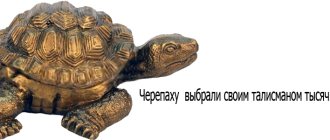If you lack reliability and stability in life, in business, in finances, then such a serious and strong Feng Shui talisman, the Ox, will help you. Many countries and cultures have such a positively strong and powerful talisman, and Feng Shui is no exception. The Ox figurine, according to the teachings of Feng Shui, is a strong, muscular animal, striding forward and symbolizing: determination in life and perseverance in achieving desires, incredible power and strength, this creature is absolutely self-confident and not afraid of responsibility and difficult decisions. And now, according to our tradition, safety precautions.
Bull - as a symbol of the Golden Calf
Only the peoples of earthly groups, whose Heaven was close and whose Heavenly Manna corresponded to material ideas and needs, could deify the bull (its analogues: buffalo, calf) as a heavenly creator.
There is a legend about the golden calf, which Moses' elder brother Aaron made from the gold jewelry of the wives of Israel while the prophet was obtaining the tablets of the Covenant for his people on Mount Sinai.
What was bad about that idol or what was the sin of the deification of the golden calf by the ancient Jews?
This was the symbol of the Egyptian sacred bull Apis, dedicated to Ptah (the first creator and ruler of the world of the dead) or Osiris (the deity of the underworld, the king of rebirth, he was also called the “bull of the underworld”), that is, the rejection of the One God and a return to the beliefs of the civilization from which Moses led his people away. That is, betrayal of a new emerging religion for the sake of the old traditional egregor.
And further, already in the European tradition, the golden calf symbolized material values and wealth, human greed and thirst for profit - everything that Moses tried to turn his people away from.
In the stock market, a “bullish trend” or “bulls” refers to a growing market and those who play for higher prices. After all, a bull throws its opponent up with its horns, in contrast to the opposite force - “bears”, named by analogy with an animal that throws its victims to the ground, down.
It is not for nothing that the powerful attacking bull is one of the most popular symbols of New York and Wall Street, the financial heart of America, and perhaps the entire planet...
His balls are shining - after all, tourists from all over the world want not only to look at this aggressive financial producer, but also to perform a simple ritual of attracting wealth and material luck into their lives - to rub their bullish “dignity”.
Passion in African style
In the African country of Uganda, even today, the level of well-being and wealth of a person is directly proportional to the number of cows he has. And there is a logic to this: eating a cow means eating food, since the basis of the diet is milk.
Among African tribes, bulls and cows are valued more than people.
The Karamajong tribe is distinguished by the fact that each man in it has his own totem bull. It is noteworthy that the bull bears the same name as the owner and they are perceived as a single whole. The warriors of this tribe believe that if you shout out the name of the bull before a fight, it will help them acquire special powers, add courage and lead to victory. Sacred bulls are valued here much more than even wives, since each man has several wives, but only one bull.
If such a bull died or disappeared, then this is considered a very bad omen. If those responsible for this are found, and they, as a rule, are found, then they will face a very severe punishment.
Bulls were considered sacred animals by many ancient peoples and tribes.
If the owner of the bull dies, then the bull himself also faces a similar fate - he is slaughtered, and right on the owner’s grave. Bulls are also related to matrimonial customs.
The men of this tribe spend six months in the pastures and when they return from there, they must choose a wife for themselves. But before making a choice, all the men gather in the bull pen and drink an unusual drink - the blood of their bulls, which is taken exclusively from the jugular veins. According to them, this procedure will add attractiveness and increase male strength.
Natural symbol of fertility
If we move away from the human ethnic group and use the method of natural analogies, then functionally the bull embodies the male principle of serving earthly life, matter, and the manifested world. He is a giving, nourishing symbol of male fertility. His horns also carry the meaning of male resurgent strength, powerful potency.
As a tamed masculine principle, bulls in mythology were depicted under royal riders (Europe, Astarte), the function of lovers and producers is clearly visible here.
In the Tarot system, the active, male power of the Taurus sign is carried by the senior lasso “Emperor”, who controls matter, disposes of earthly goods, and supplies them to his couple - the “Empress” (female card of the Taurus sign).
Therefore, in the traditions of different peoples of the world, there are images of a heavenly divine bull, which nourishes the earth with the moisture of rain, whose roar is thunder, and whose nostrils spew lightning. His consorts are lunar and earthly goddesses, performing the functions of a wife and mother.
Feng Shui bull figurine material
As I already said, even a soft toy or a poster with an image of a horned animal will work as a talisman, but it is better to choose a figurine made of a mineral, a valuable type of wood or metal, such as gold or bronze. In this case, the material transfers its energy to the talisman, thereby strengthening it.
Nastya Dulhiier/Unsplash
The bull made of mahogany and other valuable woods serves as a symbol of male sexuality, high potency and fertility. At the same time, the horned powerful animal embodies female strength and fertility. That is why the talisman will bring good luck to a couple who wants to have a child. It is also very good to purchase a small statue of an animal made from an ornamental stone that you really like or suits your horoscope.
Bull sacrifice
The symbolic basis of this ritual is based on natural cyclicality. The bull is one of the mythological tetramorph creatures that personify the quaternary earth-cosmic structures: 4 guardian stars of the sky, 4 cardinal directions, 4 seasons, 4 elements, etc.
The Avestan tradition describes the Guardians of the sky - “fixed stars”, belonging to the zodiacal constellations of the fixed cross:
- Guardian of the East - star Aldebaran (constellation Taurus );
- Guardian of the West - star Antares (constellation Scorpio);
- Guardian of the South - star Fomalhaut (constellation Southern Pisces);
- The Guardian of the North is the star Regulus (constellation Leo).
These Stars and the cosmic Essences assigned to their directions played the role of guardians for earthly life, protecting it from cosmic chaos and dark forces. In the space of the Earth in various cultures they were personified in the images of various creatures.
In Christian culture, this is a four: Taurus, Leo, Eagle, Angel (or Man).
They correspond to the signs of the Zodiac - Taurus, Leo, Scorpio and Aquarius, representing the solar annual cycle visible from the Earth. In which one force dies (falls asleep, curls up) so that the next one is born (woke up, unfolds).
Therefore, at a certain point in the year, Taurus (natural, lunar force, conception, the principle of the subconscious) must be sacrificed to the next force, which is contained in the sign Leo (solar force, birth, development of consciousness, individual creation).
That is why, in the ritual culture of different countries, the sacrifice of a bull (tauroctony, taurobolium, hecatomb, etc.) occupied an important place, which fit into the annual cycle and coincided with the beginning of the year, whenever it was celebrated - in winter or on the spring equinox.
Often the main character of this sacrifice is a bull's head with horns, and bull's blood and semen were also spilled on the ground - supposedly to revive nature, life, and renew the world.
The priests could choose the color of the ritual bull based on its dedication to certain forces, for example, black was dedicated to the underground gods, white to the heavenly gods. The so-called “marked” bulls, having some kind of natural mark on their forehead, were especially revered. Animals with a cross-shaped figurine between their horns were super valuable.
Often bull sacrifices were accompanied by some kind of confrontation with the hero . The ritual of the competition between the Hero and the Bull is still preserved in traditional shows in different countries. For example, in the Spanish bullfighting tradition, black bulls are used, which symbolically means death, and according to the internal ethics of this ritual, the bullfighter must respect the strength and courage of his opponent.
Spanish bullfighting is so popular that it has become a national symbol of the country (despite attacks from international animal rights organizations).
The Spanish bull embodies the spirit of the nation, not the official, but the national totem of the country, symbolically capturing the victory of the human principle over animal nature.
Syncretism in Egypt
Among the Egyptians, the cow served as a prototype for the sky goddess Nut. According to their beliefs and convictions, Nut was the mistress not only of the sky that people see, but also of a larger sphere - the entire outer space. The ancient Egyptians turned all those things that they could not understand or explain into beautiful metaphors. Therefore, looking at the sky, their brains drew the image of the mistress of the cosmos - a beautiful celestial cow, who had several forms: a woman of amazing beauty, a roof, wings and even the ocean.
The Egyptians revered the ancient bull Apis.
Moreover, all the images complemented each other and did not contradict. The Egyptians were inclined to deify everything that they could not understand, and the image invariably came out beautiful and animated. They believed that it was the heavenly cow who ensured that day followed night and vice versa. To do this, she either swallowed the stars and the Moon, or revived them, so she was considered the guardian of the peace of the dead.
In Egyptian mythology there was more than one goddess in the form of a cow. One of the greatest goddesses of ancient times, Isis, was also identified with this animal. She became a model of ideal femininity and motherhood. Sometimes Isis was depicted wearing a headdress shaped like a solar disk and decorated with cow horns. This mother goddess had her own sacred animal. He was the mother of the bull Apis - the great white cow of Heliopolis. It is known that Apis had his own temple, which was located in Memphis.
Sculpture of the ancient Egyptian God Apis.
Ox in agriculture
One of the most powerful draft animals is the ox, that is, a former bull obtained through a “good” surgical operation - castration.
Indeed, unlike the bull, the ox has no sex glands in its body and has a very low content of sex hormones. And, as a result, there is no attraction to females - such animals are much easier to control, they are docile and not aggressive.
In addition to the fact that oxen's calm power is used in the process of plowing and transportation, they are also used as a meat animal, in other words, people eat them. Ox meat is more tender and tastier than bovine meat.
All of the above will help lead us to the main ideas of this image, which traditionally will begin to actively enter our everyday life long before the new moon on February 12, 2021, which kicks off the New Year of the Ox according to the eastern calendar.
Wisdom of India
In India, since ancient times, cows have been considered something supernatural, the embodiment of the Great Mother, and sometimes the earth or even the Universe. For the Vedas, it is associated with the sun, the dawn. They call the cow nothing more than mother.
There is a Bull Temple in India. In this country, the animal is considered sacred.
In India, cows are sacred animals; eating their meat is prohibited there. For killing a cow, the culprit will certainly receive a well-deserved punishment.
Killing a bull is punished more severely. All the sacred scriptures of Hinduism are permeated with the idea of veneration of cows, they say that cow's milk awakens noble qualities in people.
Baked cow's milk has become widespread and used: along with consumption, it is used in religious rituals. Cow excrement is used in agriculture as fertilizer. Modern scientists have found that if the smoke emanating from cow dung has a strong disinfectant property.
Sculpture installed in Catalonia, depicting Pasiphae inside a cow made by Daedalus.
Cow urine is used both for medicinal purposes and for religious rituals. Panchagavya, which contains the five elements provided by cows: milk, ghee, yogurt, cow dung and urine, has the greatest cleansing power. The taboo on eating cow meat is, in fact, the first step towards vegetarianism.
The meaning of the bull symbolism for 2021
The Year of the Ox according to the Eastern Calendar (Jupiterian) is the time when the planet Jupiter spends most of the year in the sign of Aquarius , which, by the way, it enters on December 20, 2020.
Aquarius is the bearer of new programs. Indeed, in fact, in the legend, it was the Bull who was the most powerful of the heap of animals that responded to the call of the Buddha and moved to meet him.
And, if not for the strategic sly Rat, then Bychara, by right, would have become the start of the cycle . After all, he is a leader in terms of natural strength and the ability to overcome natural difficulties. With it must come a new History, a new Time, a new Adventure.
But, the model of this calendar reality is such that the Ox enters this game not on a tabula rasa (“blank slate”), but taking into account all the moves (and tails) of the previous year of the rat, 2020! Moreover, Jupiter enters Aquarius a few days later than the rat-capricorn Saturn (its transgression is December 17, 2021).
Roughly speaking, by the beginning of 2021, the “skeleton” of the new time has already been created, the structure has been set, now a new form will begin to grow, a new “meat” will be organized... That is, the problems and tasks that the previous year (2020) highlighted for you will be are still relevant, you will again need pragmatism, a serious attitude and patience in moving towards your goals .
You will have the opportunity to turn everything that you experienced, felt and understood last year into your values, internal and external, in 2021. If you did not fade away in limitations and disappointments, but were able to strengthen and temper your Spirit, then now it will begin to actively attract new ways of realization through connections and people, through matter and space .
What exactly is the symbolic continuity of the Rat and Ox signs for us?
If you would like to use the image of the Ox as your inspiration or talismans in 2021, then you can base it on its basic meanings.
Character of the year:
strength, power and fertility - as natural qualities that you control, represent (if you are a man) or that nourish you, fertilize you (if you are a woman). It is necessary to correlate these qualities with the surrounding reality and changes taking place in society.
In the extreme yang aspect, the characteristic of the bull image carries aggression, wildness and rage , which are difficult to tame. In extreme Yin there is passivity and laziness.
Each of us may have some kind of personal “ red rag ” that we will fall for. It is important to understand what turns you on, the true nature of your aggression and the meaning of such provocations.
In a positive way: the “red rag” model of the bull year is to recognize and use the motivational foundations of your own psyche, which encourage you to be active .
Basis of the year:
the desire for a material, earthly life, accumulation of finances and ownership of more property - if such an experience is desirable for you. And also - we look more broadly and mean that next year is 2022 - the year of the Tiger, when we will definitely need all this farming.
In 2021, it will be possible to “bullishly” increase your financial level and strengthen your material base, but this requires new ways and approaches to business .
The topic of money and digital technologies is very active, both in the life of any person and for the world as a whole. The topic of digital money and cryptocurrencies may simply become the “queen of the ball.”
For example, 12 years ago (that is, one Jupiterian cycle), at the junction of the previous years of the Rat and the Ox, in January 2009 the first block and the first 50 bitcoins were generated. It is logical to assume that right now cryptocurrencies are entering a new bullish turn of their upward spiral...
But, the requirements of the year are that all your acquisitions must correspond to the program of your Spirit and respond to your personal inner values. Nothing superfluous, nothing “like everyone else” (don’t herd)…
In its lowest passive aspect, the meaning of the bull symbol can mean sacrifice and submission to fate, dull work that does not allow you to develop . Here you can insert the proverb “What is allowed to Jupiter is not allowed to the Ox,” reminiscent of inequality - essential or social.
Therefore, try to ensure that your work and your activity of this period take you out of the rat race, but do not turn into movement with a yoke in a circle. How will you do it - with physical hard work, or brains, or “intention is enough”?
Spiritual meaning of the year:
the entire last year of the Rat, with its restrictions, cleansing, and trials, saved us from old habits and prepared us for a new download , for the energies of the year of the Ox.
If you were able to in 2021:
- survive, and possibly get healthier;
- become more mature (serious, patient and responsible);
- do not harden your heart and keep Love in yourself,
- find your current goals and true values,
- then 2021 brings new opportunities for implementation to the already configured programs of your life. You will receive energy and information in order to live this year in abundance, fun and originality, gaining your earthly human experience.
- Be prepared for the unexpected , and also - share your successes with friends .
- Agree to sacrifice something of your own - voluntarily, invest part of your energy in this world, then the “white tithe” will not turn into a “black tithe”.
- Remain Human , that is, head and Mind above your animal nature.
- Be attentive to what “rat tails” from 2020 are trailing behind you and deal with them :
If you still have a question - what unites the signs of Taurus (the figurative symbol of the Bull) and Jupiter in Aquarius (the astrological position of the year of the Bull in the eastern Jupiterian calendar)?
Probably, both Taurus and Aquarius are channels between the causal and buddhial bodies of a person (Taurus is descending, and Aquarius is ascending). But this is no longer a topic for a popular article, just a hint for those who understand what we’re talking about...
Feng Shui bull talisman: meaning and rules of use
The bull is a strong and powerful animal, which everyone associates with incredible strength and assertiveness. That is why it is used in many cultures as a symbol of success and prosperity. Feng Shui was no exception, according to which the bull talisman brings stability and career advancement to its owners. But for this to really be the case, you need to choose the right figurine correctly and place it in the most suitable sector of the house.
Who is the Ox totem suitable for?
If you like this animal and you feel emotional closeness to its image, character.
If you have something bullish in your family code, for example you are Bykov, Teletsky, etc.
If you were born:
- in the years of the Ox according to the eastern calendar - 1925, 1937, 1949, 1961, 1973, 1985, 1997, 2009);
- in the years of the Ox according to the Zoroastrian calendar - 1919, 1951, 1983, 2015;
- under the sign of Taurus (from approximately April 20 to May 20);
- in the hall of the Tour of the Slavic Zodiac (from approximately April 15 to May 7).
bullish degrees in your horoscope :
- 5 degrees Taurus (wild buffalo Zebu);
- 17 degrees Taurus (yak);
- 25 degrees Taurus (bison);
- 13 degrees Leo (red buffalo);
- 11 degrees Scorpio (black buffalo);
- 6 degrees Sagittarius (oryx);
- 22 degrees Capricorn (musk ox);
- 14 degrees Aquarius (tour).
Tags: Talismans and amulets, Totems of birds and animals
- Related Posts
- Fox - symbol and totem
- Dolphin – symbol and totem
- Spider Totem - character and meaning
Russian soulfulness
Everyone knows the Russian folk tale about Kroshechka-Khavroshechka. The main character there had an assistant - the cow Pestrukha, which symbolizes a mother protecting her child from evil people, in particular from the stepmother. In the fairy tale, the main character calls Pestrukha Mother Cow. The cow helps Tiny Khavroshechka even after death, but for this the heroine should not eat cow meat, but bury the helper’s bones in the garden and water them daily. An apple tree soon grows at the burial site, thanks to which Tiny Khavroshechka finds an excellent groom and marries him, finally leaving the house of her evil stepmother.
Illustration from the fairy tale about Tiny Khavroshechka and her faithful cow.
You can talk about the role of bulls and cows in various beliefs, religions and mythologies for a very long time. Here we can recall both Zeus the bull and the hair-eyed goddess Hera, the Sumerian bull god Sin, who was the embodiment of the month. From all this the conclusion suggests itself that the role of this animal in the life of every nation is great. May the year of the ox bring people strength, perseverance, kindness and wealth. In turn, people need to become more merciful and kinder towards these wonderful animals.
If you find an error, please select a piece of text and press Ctrl+Enter.
From heaven to earth
Since ancient times, the land has been cultivated with the help of bulls.
Work of the same kind was often attributed to the gods. Thus, in Slavic mythology, Perun, as a heavenly plowman, plows the sky with the help of divine bulls. The ancient Greeks have a myth about copper-legged and copper-headed bulls, on which the legendary hero Jason plowed. But before Ancient Greece and especially the Slavs, agricultural culture arose among the peoples of the East (in Mesopotamia, the Indus Valley), so it was there in the 3rd-2nd millennia BC. began to worship bulls. Thus, among all agricultural peoples of antiquity, the bull was held in high esteem, but the cult of this animal received its greatest development in Egypt. For a long time, the ancient Egyptians worshiped Apis, a deity who was embodied in a sacred bull. The cult of Apis reflected the symbolism of fertility - the Egyptians believed that the sacred bull, released into the fields, increased productivity. The connection of this tradition with agriculture is clear from the custom of harnessing Apis to a plow upon the accession of a new pharaoh to the throne, when the ruler of Egypt made a sacred furrow in the field.
A black bull with a white triangular spot on its forehead was chosen as the deity. To prevent the mother of the future Apis from being accidentally killed, Egyptian laws forbade killing cows and eating their meat under penalty of death. It is interesting that this prohibition did not apply to bulls: they were eaten, but only with the permission of the priests. They first carefully examined the animal to make sure that it was not Apis.
A magnificent temple with a luxurious park was erected for this beloved animal in Memphis. Here priests served Apis, served him delicious food, the purest water, decorated him, fumigated him with aromatic herbs, and believers constantly flocked from all over the country to worship. When the bull died a natural death, it was embalmed and buried with many ceremonies. Until the priests found the “new receptacle for the soul” of Apis, the entire people were in deep mourning.
Cattle were also deified in India. Only there they worshiped rather not a bull, but a cow, which personified the moon goddess. Researchers believe that this symbolic connection is due to the coincidence of the 10-month lunar year with the length of the cow's pregnancy. In addition, the Hindus found similarities between a cow's horn and a sickle. The veneration of these animals has been preserved in some Indian religions to this day. And now in Delhi you can see how a cow lying down on the sidewalk is not herded away, but respectfully walked around.
Ox talisman in feng shui: meaning, varieties, selection rules
This oriental symbol suits everyone. The talisman will provide support to its owner, regardless of whether it is used by a man or a woman, a child or an adult.
A figurine of a mighty animal will be useful to the head of his own enterprise, an ambitious careerist, an investor (Feng Shui masters say that a leisurely Ox helps make the right decisions), a student or schoolchild.
Since the Ox symbolizes determination and excellent physical health, its image can become an indispensable amulet for an athlete and, in general, any person whose activities involve physical activity. In addition, this animal is directly related to fertility and productivity, which means it will bring happiness to couples who dream of having a child.
From Hercules to bullfighting
In Minoan Crete, the ferocious bull god, depicted in Greek myth as the Minotaur, personified the destructive forces of nature.
Its menacing lowing was associated with the roar of a raging sea, and the stomping of its hooves and shaking of its horns was associated with a strong earthquake. To appease the angry deity, the inhabitants of Crete brought him bloody sacrifices, including human ones, judging by the myth of the Minotaur. For the same purpose, the islanders also staged dangerous ritual games with a bull, depicted on the frescoes of the Knossos Palace. In fact, this is where tauromachy (bull fighting) originates. The Hellenic hero Theseus, with the help of Ariadne, penetrated the underground labyrinth of the Knossos Palace and in a difficult struggle defeated the terrible Minotaur, and the greatest Greek hero Hercules tamed the enraged Cretan bull and, by order of King Eurystheus, delivered him to the gold-abundant Mycenae - this was the seventh labor of Hercules.
Tauromachy has survived to this day in the form of Spanish bullfighting. This tradition began with the Iberians, the ancient population of the Iberian Peninsula. Initially, bullfighting was a favorite pastime of the common people, but from the end of the 15th century, the caballeros, the Spanish nobles, also became interested in bullfighting. Both secular authorities (King Philip V) and spiritual authorities (Pope Pius V) repeatedly tried to ban the bloody sport, but the ancient custom, transformed into a fascinating festive spectacle, turned out to be surprisingly tenacious. And to this day, brave matadors, ready to risk their lives for the sake of glory that will thunder throughout Spain, enter the arena of Madrid's Plaza Mayor to the applause of a crowd of thousands!










